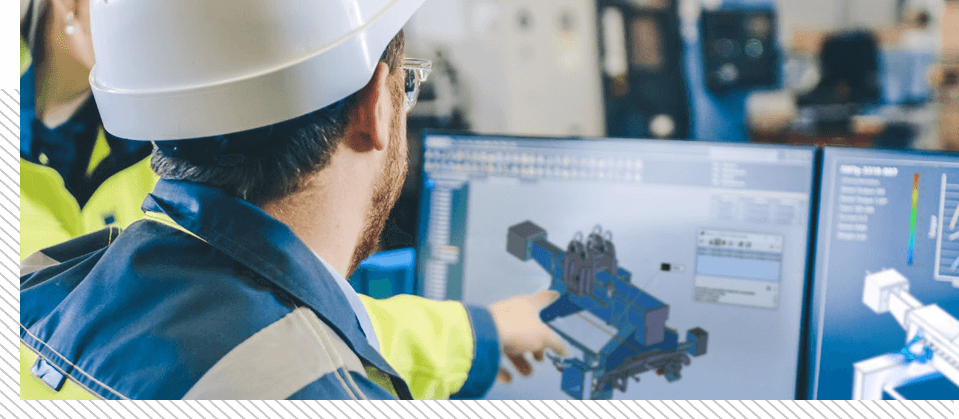
Experience and modern technology
Optimum load handling attachments through specialisation
More than 20 experienced load handling equipment designers with specialist knowledge in the fields of statics, welding and drive technology design the optimum solution for your needs.
Professional learning is very important at Axzion: all employees receive ongoing training and further education. Specialists from DEKRA or TÜV, the employers’ liability insurance association or well-known suppliers ensure that knowledge is regularly updated so that new standards are implemented immediately. New knowledge is also transferred internally. In internal training courses, experienced developers pass on their know-how to new employees.
The development teams work with state-of-the-art IT and the latest software. The designs are created in 3D with SolidWorks and verified with the integrated FEM software. Static verifications are created with Mathcad or RSTAB.
Load changes
The number of load cycles is crucial. The designer of a load handling device must determine in cooperation with the user whether DIN EN 13155 “Cranes – Safety – Loose load handling devices” can be applied or whether the design of the load handling device must be carried out according to Eurocode 3-DIN EN 1993 “Design, construction and execution of steel structures”.
Maximum 20,000 load changes
If maximum load changes of up to 20,000 are to be expected for the load handling attachments to be designed, EN 13155 “Cranes – Safety – Loose load handling attachments” is applied in full. This means that the mechanical load bearing parts must meet the following requirements in terms of mechanical strength:
I) The lifting accessory must be designed to withstand a static load of three times the load capacity and to hold the load even if permanent deformations occur.
II) The load-carrying equipment must be dimensioned in such a way that it can withstand a static load with twice the load-bearing capacity without permanent deformations.
III) In section 6 of DIN EN 13155, a further, not insignificant requirement is made. For individually designed and manufactured products, both a type test and an individual test are required. For series products, the type test must be carried out on one or more representative products from the series and the individual test on each individual manufactured product.
IV) The manufacturer of the load handling attachment must provide evidence that the welding work was carried out by personnel tested in accordance with DIN EN ISO 9606-1 “Testing of welders – Fusion welding”. In addition, it must be verified that the quality of the welds complies with DIN EN ISO 5817 “Evaluation of welds”.
DIN EN 13155 does not cover the hazards related to the mechanical strength of load handling attachments intended for more than 20,000 load cycles. Load handling devices that have been designed according to DIN EN 13155 must therefore be taken out of service after 20,000 load changes.
Operating temperatures
The operating temperatures must be known at the time of design. The normal load handling attachment is used in a temperature range of 0 °C to +80 °C. When used outdoors, temperatures as low as -20 °C can be reached. In some regions of the world, temperatures as low as -40 °C are even possible. In these cases, steels with low temperature resistance are used.
When transporting hot loads, on the other hand, very high operating temperatures are possible. In this case, special steels must be selected that are suitable for these special operating conditions.
Lifting speed
The load handling device must be designed for the lifting speeds that occur. A maximum of 10 m/sec is usual. In order to accelerate the loading processes, significantly higher speeds are possible, e.g. in transhipment operations (port, steelworks, etc.), which must be known at the design stage.





